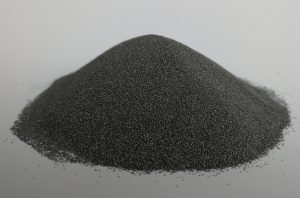Carbide, a compound composed of carbon and a less electronegative element, finds extensive use in various industries due to its exceptional properties. This article explores the reasons behind the widespread use of carbide, focusing on its characteristics and applications.
Key Properties of Carbide
Hardness and Durability
Carbide is renowned for its remarkable hardness, often exceeding most metals and materials. This high level of hardness translates into superior wear resistance, making carbide ideal for cutting tools, abrasives, and molds. Its ability to maintain sharpness and shape under extreme conditions is unparalleled.
Resistance to High Temperatures
Carbide maintains its strength and shape at temperatures where most metals would soften or melt. This property is crucial in applications involving high-temperature processes, such as jet engine components and industrial cutting tools.
Chemical Stability
Carbide is chemically stable and resistant to corrosion. It does not easily react with other substances, making it suitable for use in harsh chemical environments or in the presence of corrosive materials.
Applications of Carbide
Cutting and Machining Tools
In the manufacturing sector, carbide is a preferred material for cutting and machining tools. The hardness and durability of carbide tools allow them to cut through hard materials like steel with ease, increasing efficiency and reducing downtime for tool replacement.
Mining and Drilling
Carbide is extensively used in mining and drilling equipment due to its ability to withstand harsh conditions and abrasive materials. Drill bits and mining tools made of carbide offer longer lifespans and improved performance, contributing to cost savings and enhanced productivity.
Industrial Machinery
Components of industrial machinery that require high wear resistance and durability are often made of carbide. This includes parts like dies, molds, and pistons, which benefit from carbide's ability to retain shape and function over prolonged periods.
Economic and Efficiency Considerations
Cost-Effectiveness
While carbide tools and components might have a higher initial cost compared to conventional materials, their longer lifespan and reduced need for replacement make them cost-effective in the long run. This aspect is particularly important in industries where downtime and maintenance costs are critical factors.
Enhancing Efficiency
The use of carbide tools and components can significantly increase efficiency in various processes. Their ability to maintain sharpness and resist wear reduces the frequency of tool changes, leading to more continuous and faster production cycles.
Downsides and Limitations
Despite its many advantages, carbide is not without its downsides. The material can be brittle and may shatter under high impact or shock conditions. Additionally, the production of carbide components is complex and requires specialized equipment, contributing to its higher initial cost.

Conclusion
Carbide's unique properties, such as hardness, temperature resistance, and chemical stability, make it an invaluable material in numerous industrial applications. Its use in tools, machinery, and drilling equipment highlights its versatility and effectiveness. Although there are some limitations and cost considerations, the long-term benefits and efficiency gains offered by carbide often outweigh these concerns.For more detailed information on carbide powder, a key form of this material, visit Carbide Powder.